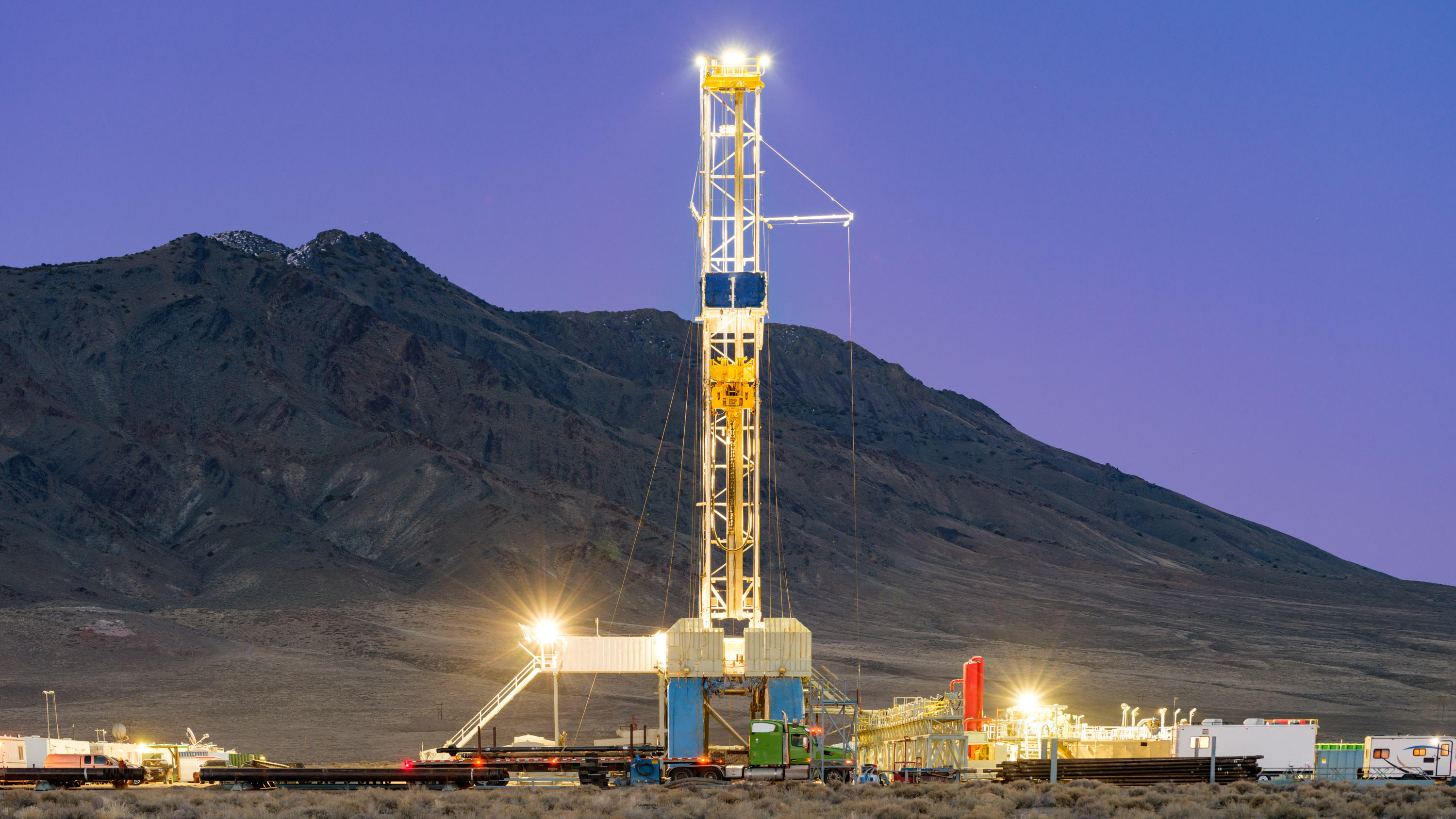2023 Climate Tech Companies to Watch: Fervo Energy and its geothermal power plants
Fervo Energy is using fracking techniques to harness the limitless power beneath our feet.

Explore the 2023 list of 15 Climate Tech Companies to Watch.
Fervo Energy is commercializing a geothermal technology that could significantly expand the regions that could tap into the steady, carbon-free energy source, by creating or widening cracks under the surface to allow water to more easily circulate underground. These enhanced geothermal plants could become an increasingly critical source of clean electricity as grids grow greener, helping to balance out rising levels of fluctuating renewables like wind and solar.
Intro
Fervo Energy is expanding the bounds of where geothermal plants can be built—and what they can do.
Geothermal power plants work by circulating water through hot rock deep underground, then converting that heat energy into electricity at the surface. But traditionally, it’s only been possible to build economical facilities in regions where developers could drill down to porous, permeable hot rock at relatively low depths.
The nearly six-year-old Houston, Texas, startup is changing that by using hydraulic fracturing techniques—better known as fracking—to create or widen cracks below the surface, artificially creating the permeability that allows water to easily flow underground. In July, Fervo announced it had successfully completed tests at its pilot plant in northern Nevada, which the company says demonstrated the commercial viability of its technology.
Key indicators
- Industry: Geothermal energy
- Founded: 2017
- Headquarters: Houston, Texas, USA
- Notable fact: Fervo has raised nearly $190 million from Bill Gates’s Breakthrough Energy Ventures, DCVC, Capricorn Investment Group, and others.
Potential for impact
Fervo’s enhanced geothermal approach promises to significantly expand the areas where we could tap into the carbon-free and nearly limitless source of energy beneath our feet. Geothermal offers the added advantage of generating electricity around the clock and calendar, making it an ideal clean source to fill in the gaps as grids increasingly come to rely on fluctuating renewables like solar and wind.
It could provide a much cheaper or less controversial way of fixing that fundamental challenge in cleaning up the grid than building giant battery plants or adding nuclear power reactors, respectively.
Fervo is developing an additional trick as well, tapping into the particular geological characteristic of enhanced geothermal wells to create systems that can store up energy for extended periods or easily ramp electricity up and down as needed. By pumping water into the wells but not releasing it, the company found it could build up pressure in the system, storing energy that can be used when it’s most needed, much like charging a battery. That could make the company’s future plants even more valuable to grid operators dealing with increasingly erratic and dynamic electricity systems.
Caveats
Fervo faces some hurdles, however. The company, which has only built a commercial pilot facility so far, still needs to prove that its basic approach and advanced capabilities work effectively, affordably, and consistently on larger scales. It’s likely to require significant changes in electricity market rules for grid operators to properly incentivize and reward the flexibility and storage capabilities the company is developing. And other startups are exploring additional ways of pushing the capabilities of geothermal energy.
Fervo sidesteps the climate fears associated with the term fracking as it’s not using the technique to extract fossil fuels. But enhanced geothermal does raise at least one of the same concerns: the potential to trigger earthquakes. Fervo and some academic experts stress that the sector’s improved designs and standards have reduced the risk that developing and operating such plants can induce seismic events that can be felt.
But public concerns about earthquakes may nonetheless exacerbate the challenge of securing the necessary permits to build the plants.
When
The company has already announced several power purchase agreements for geothermal plants that are slated to put nearly 100 megawatts of clean capacity onto electricity grids in the next few years. Its commercial pilot in Nevada, which will help to power Google’s operations in the state, is set to begin sending electricity to the grid by the end of this year.
Next steps
Fervo has also begun drilling a geothermal project in Beaver County, Utah, adjacent to the US Department of Energy’s Frontier Observatory for Research in Geothermal Energy Initiative. It will supply geothermal power to communities in Southern California and is slated to come online in the second quarter of 2026.
The company is now exploring ways that geothermal power can be coupled with another emerging climate technology, by providing the clean electricity needed to power facilities that can suck carbon dioxide out of the atmosphere. Fervo has secured $2 million in funding from the Chan Zuckerberg Initiative to design and engineer a combined geothermal and direct-air-capture plant, and around $3 million from the US Department of Energy to begin preparatory work for a larger direct-air-capture hub in southwestern Utah.
Explore the 2023 list of 15 Climate Tech Companies to Watch.
Deep Dive
Climate change and energy

This rare earth metal shows us the future of our planet’s resources
The story of neodymium reveals many of the challenges we’ll likely face across the supply chain in the coming century and beyond.

Andrew Ng’s new model lets you play around with solar geoengineering to see what would happen
The climate emulator invites you to explore the controversial climate intervention. I gave it a whirl.

Want to understand the future of technology? Take a look at this one obscure metal.
Here’s what neodymium can tell us about the next century of material demand.
Stay connected
Get the latest updates from
MIT Technology Review
Discover special offers, top stories, upcoming events, and more.
